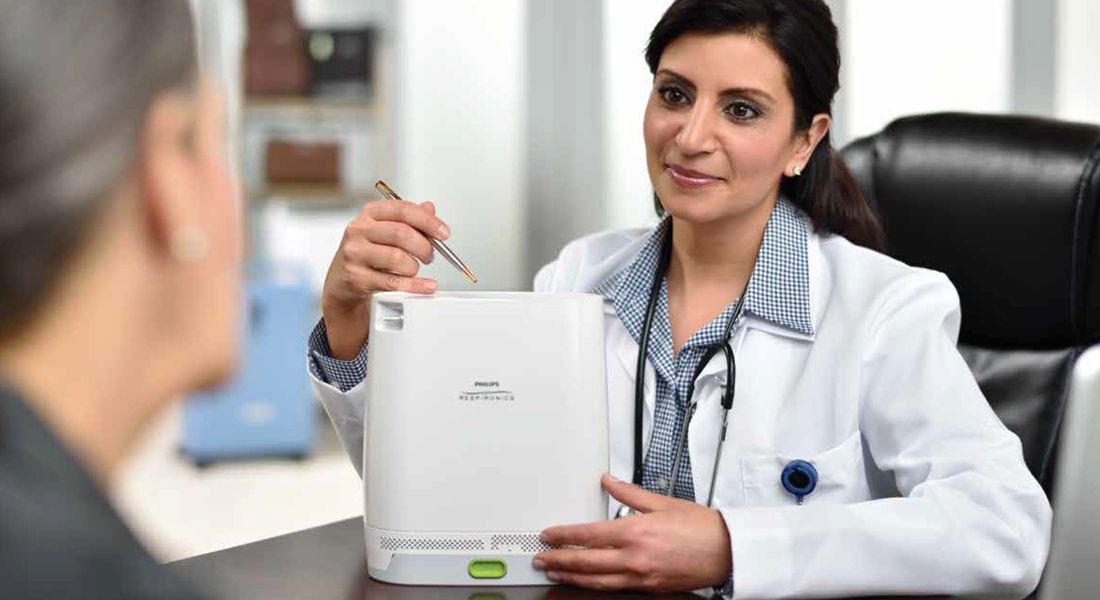Coping Tips for COPD Awareness Month | Go2POC


Coping Tips for COPD Awareness Month
November is National COPD Awareness Month. Most people with chronic obstructive pulmonary disease (COPD) suffer from both chronic bronchitis and emphysema, but the severity of each can vary person to person.
What is COPD?
Chronic obstructive pulmonary disease (COPD) is a lung disease that manifests in two main forms: chronic bronchitis and emphysema.
With chronic bronchitis, patients often have mucus in the lungs and airways that causes inflammation and a long-term cough. Emphysema, on the other hand, involves physical damage to the lungs.
Most people with COPD suffer from both chronic bronchitis and emphysema, but the severity of each can vary person to person.
According to the American Lung Association, over 11 million people have been diagnosed with COPD, and millions more may be unaware they are currently living with the disease. To raise awareness about the lung disease, Go2POC provides tips and support to help those with COPD live a healthy lifestyle.
What causes COPD?
The leading cause of COPD (chronic obstructive pulmonary disease) is tobacco and cigarette smoke, yet airborne toxins and pollutants also contribute to the pulmonary disease.
Since damage to your lungs occurs overtime, many men and women are unaware they may be suffering from COPD. They simply attribute their shortness of breath to “getting older,” and they often wait longer than they should before consulting a physician.
To identify signs of COPD early on, watch for the following symptoms:
- Coughing or wheezing
- Excess phlegm
- Difficulty taking deep breaths
- Shortness of breath
If you feel you have any of these symptoms, you should talk to your doctor. Diagnosing COPD in earlier stages helps you make lifestyle changes to treat the disease and prevent severe damage to your lungs.
When a person has healthy lungs, air moves through the person’s bronchial tubes to tiny, round air sacs known as alveoli. Oxygen then moves through the walls of the air sacs into the bloodstream, and carbon dioxide gas (CO2) moves into the air sacs to be exhaled from the body.
For people with COPD, less air moves through their airways when breathing because the airways are often inflamed or clogged with mucus. Additionally, the walls dividing the tiny air sacs in their lungs have been destroyed overtime, and less oxygen is able to pass into the bloodstream.
Since smoking is a major cause of the damage to your lungs, the number one lifestyle change you can make to prevent or treat COPD is to quit smoking. No matter your age or the progression of your COPD, avoiding tobacco smoke will help prevent further damage to your lungs.
Coping with severe COPD
Not everyone is fortunate enough to catch their COPD in the early stages of the disease.
According to the National Heart, Lung, and Blood Institute, COPD is a major cause of disability and the fourth leading cause of death in the United States. As your pulmonary disease progresses, it’s important to practice pulmonary rehabilitation techniques and talk to your doctor about supplemental oxygen.
When your body is unable to absorb enough oxygen from your lungs, your shortness of breath can cause you to limit daily activities. People with COPD often feel forced to cut out activities they love, which can limit the quality of life and lead to frustration or even depression. Luckily, COPD doesn’t have to limit your freedom and independence.
With simple breathing practices, healthy eating, exercise, and supplemental oxygen, you can easily manage your COPD.
National COPD Awareness Month is About Learning How to Live With COPD
Portable oxygen doesn’t have to change your life. Using oxygen from a portable oxygen concentrator (POC) protects your heart and organs from damage and empowers you to live the life you love.















